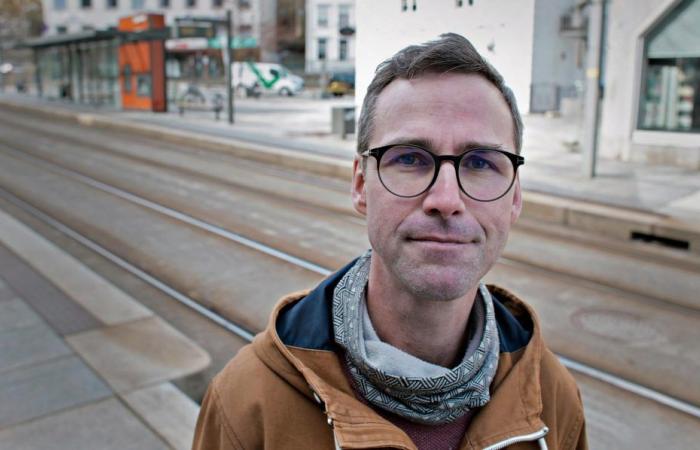The crisis atmosphere in recent weeks creates poor conditions for both trust and dialogue. How can we bring about an enlightened discussion about challenges in youth culture?
- Espen Helgesen
Concerned parent
Right now
This is a debate post. The entry was written by an external contributor, and quality assured by BT’s debate department. Opinions and analyzes are the writer’s own.
The parental reaction for a safer youth in Bergen Sør has started an important conversation about challenges in today’s youth culture. Through both a chronicle and a crisis meeting, the Parents’ Response has focused on the importance of trust and dialogue between parents and young people. There is still reason to ask whether the campaign will lead to more or less trust and dialogue, especially in light of how young people’s relationship with drugs has been portrayed.
At the crisis meeting, a number of disturbing graphs were presented. We parents heard that there has been an increase in the proportion of young people who state that they have been under the influence of alcohol. A larger proportion than before state that they have used cannabis, and the same applies to “other narcotic substances”.
What the graphs had in common was that they compared figures from 2021 and 2024. The obvious question of whether the figures actually show a trend, or perhaps can rather be explained by the fact that most young people were isolated at home during the pandemic in 2021, was not addressed.
If we expand the timeline backwards, we see a different picture. The Institute of Public Health has examined Norwegians’ lifestyles over time, and shows, among other things, a marked decrease in 15-16-year-olds’ alcohol use from 1999 to 2019. The proportion who had drunk alcohol in the last 30 days went from 55 per cent in 1999 to 25 per cent in 2019.
Trials of cannabis in the same age group reached a peak in 1999, and went from 12.3 percent that year to 8.7 percent in 2019. Other illegal drugs such as amphetamines and ecstasy also had their heyday among 15- and 16-year-olds around the turn of the millennium, and the proportion who have tried these substances has fallen sharply. The exception is cocaine, which reached a peak in 2007 and has since remained around the same level as in 1999 with some small variations.
If you increase the age range to include those between 16 and 20 years old, cannabis use is lower in the latest available year (2022) than in 2019 and roughly at the same level as 2014. In short, it seems that today’s young people are making far healthier life choices in this area than what their parents did.
It therefore gives it makes little sense to highlight relatively small changes in youth drug use only in recent years if we want an enlightened discussion on the topic. The trust-based conversation should begin with an acknowledgment that today’s young people for the most part have a far more cautious approach to drugs than their parents’ generation had.
The concern for increased Drug use was also highlighted in the chronicle that the Parents’ Reaction published in Fanaposten on 4 April. Under the heading “It doesn’t apply to your youth, you say? This is their everyday life in 2024” is the first point “Increased normalization of drug use, especially among young people”.
Here we refer to findings from a report prepared by Utekontakten in Bergen. According to the chronicle, the report shows that “Bergen youth have an incorrect image of how many actually use drugs, which causes more people to explore more”. The problem with this rendering is that the report says nothing about Bergen youth in general, but is based on conversations with young people who either themselves have worrying drug use, or “have close acquaintances of someone who is affected”.
also read
Eirin Eikefjord: “Drugs, crime and snitching are not a Fana phenomenon”
That’s what the report tells usis that youth who has a worrying drug use tend to overestimate how many others get high. The built-in bias in the sample that was interviewed means that the findings can in no way be used to support the claim that Bergen youth generally overestimates other people’s drug use.
Such selective and misleading representations not only contribute to distorting the public conversation, but can also undermine the trust between parents and young people. This becomes even more problematic because the Parent Reaction, by conveying an undocumented message that drug use is “normalised”, ironically can contribute to precisely the normalization they wish to warn against.
Parent reaction’s initiative has an important message that parents must care and support their young people in a vulnerable phase of life. Nevertheless, my main concern now is that the measure could lead to increased mistrust, and thus a poorer basis for dialogue. Rather than calling for a crisis atmosphere based on insufficient knowledge, we parents should recognize and emphasize that many of the changes in youth culture have actually been for the better.
What do you want to write about? Send another post [email protected]! Not sure how to do it? See tips on this page.
Published: April 26, 2024 9:06 p.m







